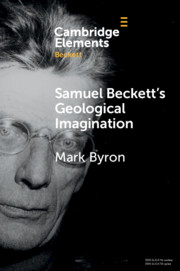Element contents
Samuel Beckett's Geological Imagination
Published online by Cambridge University Press: 18 September 2020
Summary
- Type
- Element
- Information
- Series: Elements in Beckett StudiesOnline ISBN: 9781108772457Publisher: Cambridge University PressPrint publication: 08 October 2020
Bibliography
Primary Sources
Secondary Sources
- 14
- Cited by

